How the US Navy's ice cream ships boosted morale aboard warships during World War II
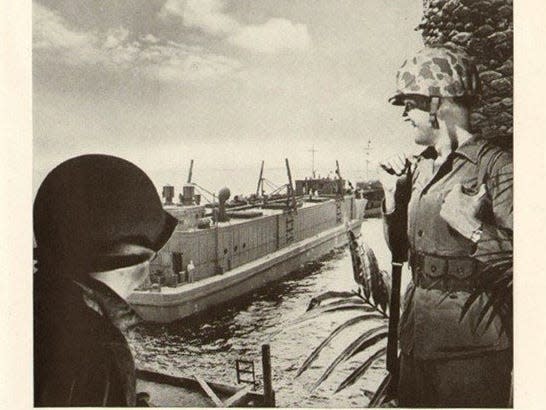
The US Navy banned alcohol consumption on naval vessels, bases and shipyards in 1914.
As the US faced the impending threat of war, sailors needed an alternative morale boost: ice cream.
The Navy built a fleet of ice cream barges capable of churning out hundreds of gallons daily.
In 1914, then-Secretary of the Navy Josephus Daniels issued an order prohibiting the consumption of alcohol on any naval vessel, shipyard, or shore station.
In lieu of alcohol, sailors enduring the hardships of the sea were in need of an alternative morale booster, especially as the US faced the impending threat of World War I.
Amid wartime rationing and supply shortages, an unlikely contender emerged: ice cream.
The service began adding ice cream makers to ships prior to World War I and resorted to operating refrigerated barges to meet the needs of the massive and far-flung Pacific fleet during World War II.
Ice cream propaganda
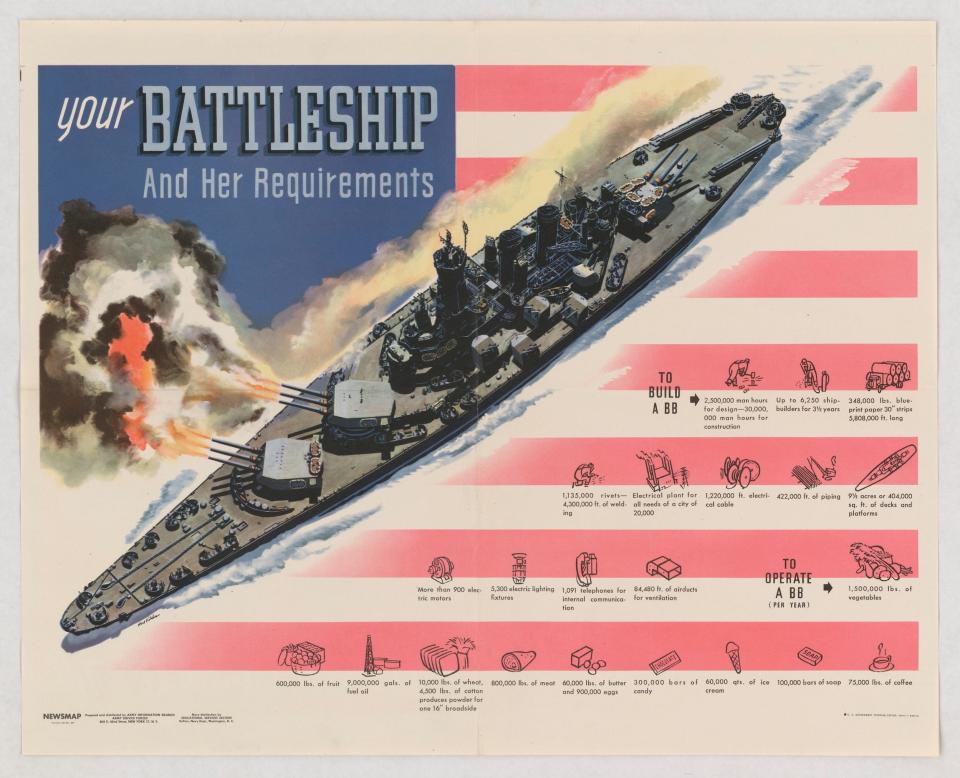
In 1941, the US government declared ice cream a nonessential food as part of rationing efforts ahead of World War II.
The International Association of Ice Cream Manufacturers and the National Dairy Council launched an intense campaign to reverse the decision, publishing propaganda posters emphasizing the "health" benefits ice cream could offer US troops.
"There's a reason the US Navy serves ice cream," a 1944 ad by the National Dairy Council read. "America's favorite dairy food — ice cream — is an important source of vitamins, proteins and minerals."
The ad goes on to cite the work of subsistence researchers in Chicago, who approve foods served by the Navy.
"That is why it is significant that ice cream ranks so high on Navy menus," the ad read. "It is not only a favorite food, but it also supplies valuable vitamins, proteins, and minerals. For that reason, wherever practical, the Navy gets ice cream!"
Meanwhile, civilians at the homefront faced ice cream shortages amid the rationing of sugar and milk. However, organizations framed the ice cream scarcity back home as a sacrifice for the well-being of US troops.
"Ice cream is a favorite with all branches of our armed forces — and it is important that they get this valuable food," according to the ad. "So if you aren't always able to get all the ice cream you want — remember, you're 'sharing' this nutritious food with our fighters."
Aiding the recovery of sick troops
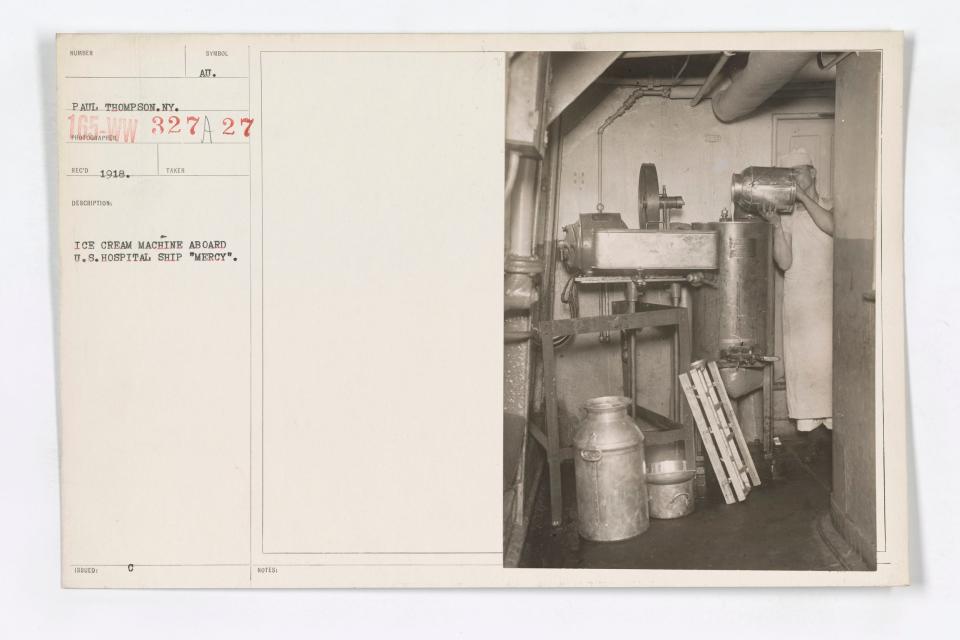
The Navy has made ice cream accessible to sailors since the early 1900s, installing ice cream machines aboard US Navy ships to give sailors easy access to the frozen treat.
During World War I, Navy hospital ships, like USNS Mercy, used a milk emulsifier called the "mechanical cow," which could produce 15 gallons of cold, pasteurized milk in 45 minutes. The ships also had an electric ice cream machine that could make 10 gallons at a time.
Ice cream was thought to aid in the recovery of patients — if not in body, then in spirit.
A 1918 editorial published in the monthly trade magazine "The Ice Cream Review" highlighted the benefits of ice cream for the sick while urging the federal government to provide ice cream to troops overseas.
"In this country, every medical hospital uses ice cream as a food, and doctors would not know how to do without it," the editorial read.
Maritime ice cream parlors
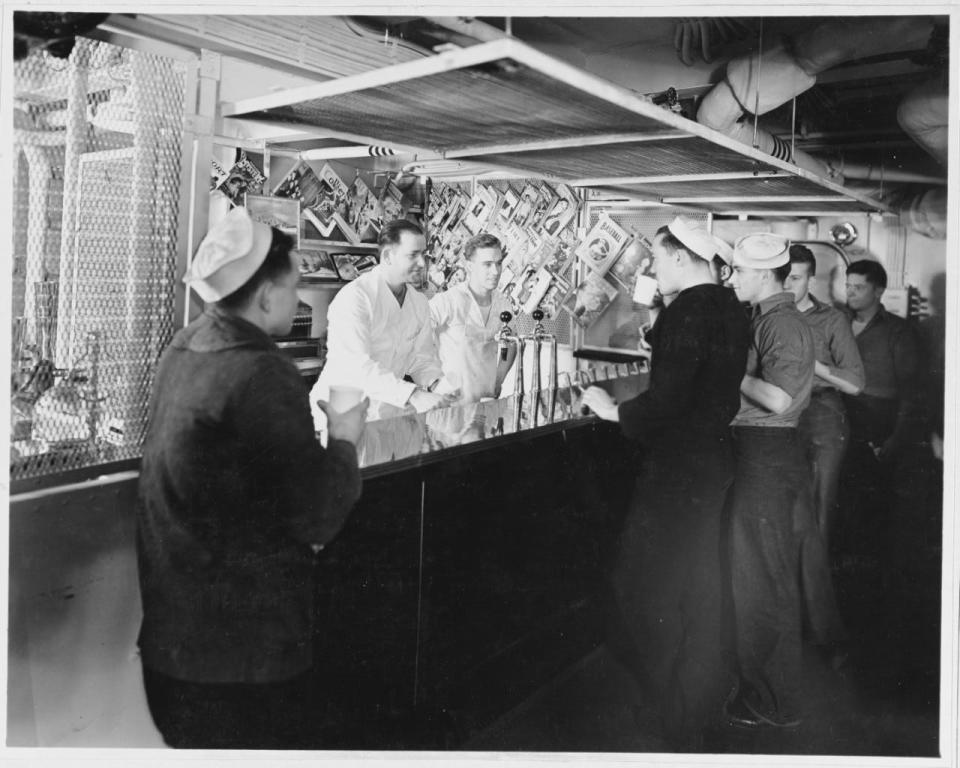
As time went on, ice cream operations at sea began to more closely resemble experiences back home.
The first-in-class super-dreadnought battleship USS Pennsylvania had its own maritime ice cream parlor, featuring a soda fountain and tiled walls decorated with images of famous ships, according to the US Naval Institute.
The Navy also installed a brand-new soda fountain aboard the Omaha-class light cruiser USS Memphis, which cost $7,000 — about $130,000 in 2024.
A frozen treat before abandoning ship
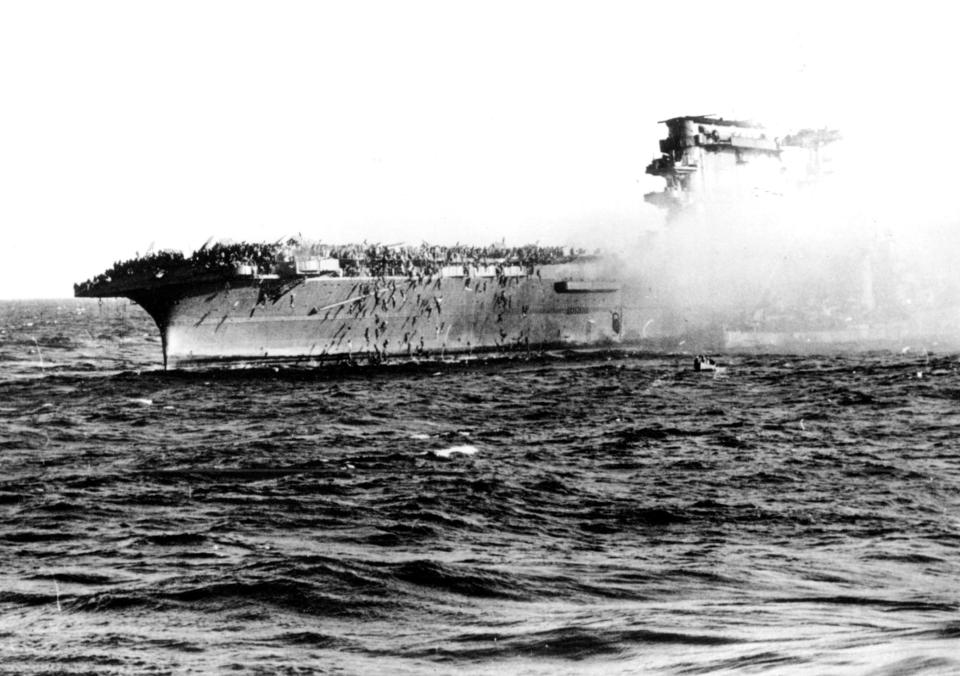
During the Battle of the Coral Sea in 1942, the Japanese aircraft carrier Zuikaku struck the US aircraft carrier USS Lexington with two torpedoes, severely damaging its hull.
Crews aboard the Lexington were forced to abandon ship before a powerful internal explosion set the vessel ablaze — but some sailors had different priorities in mind.
Four decades later, then-retired US Navy Adm. Noel A.M. Gayler, one of the Navy's first fighter aces who served aboard the Lexington, recalled the moments before Lady Lex sank to its watery grave.
"We were driven by the fires to the extreme end of the ship," Gayler told Paul Stillwell, a historian at the US Naval Institute, in a 1983 interview. "The ship's service ice cream plant was in the extreme port corridor. Some clown passed the word that there was free ice cream, so sailors were abandoning ship and lining up for free ice cream."
Gayler added: "Of course, they puked it up as soon as they'd been swimming in salt water [for] a while."
Merle Lebbs, an electrician's mate on board the Lexington, said he was among those who polished off the ice cream containers evacuating the vessel.
Lebbs told local Oklahoma news station KFOR that, after the captain issued the order to abandon ship, a warrant officer broke the lock on a freezer door and handed out vanilla ice cream to a dozen or so sailors.
"He didn't think anything of it because we were abandoning ship. We just figured we might as well do it," he said.
In a 2002 interview for the US Naval Institute, George Von Hoff, then a 21-year-old sailor aboard the doomed Lexington, said he was among the hundreds of crewmen rescued by the destroyer escort USS Hammann.
Von Hoff said the Hammann then transferred the Lexington's crew to the Northampton-class cruiser USS Chester to receive "clean clothes, a bunk, and much-needed food."
"We hadn't eaten anything that day except ice cream, which I ate out of my helmet," he said in the interview.
The 'Ice Cream Ship' of the European invasion
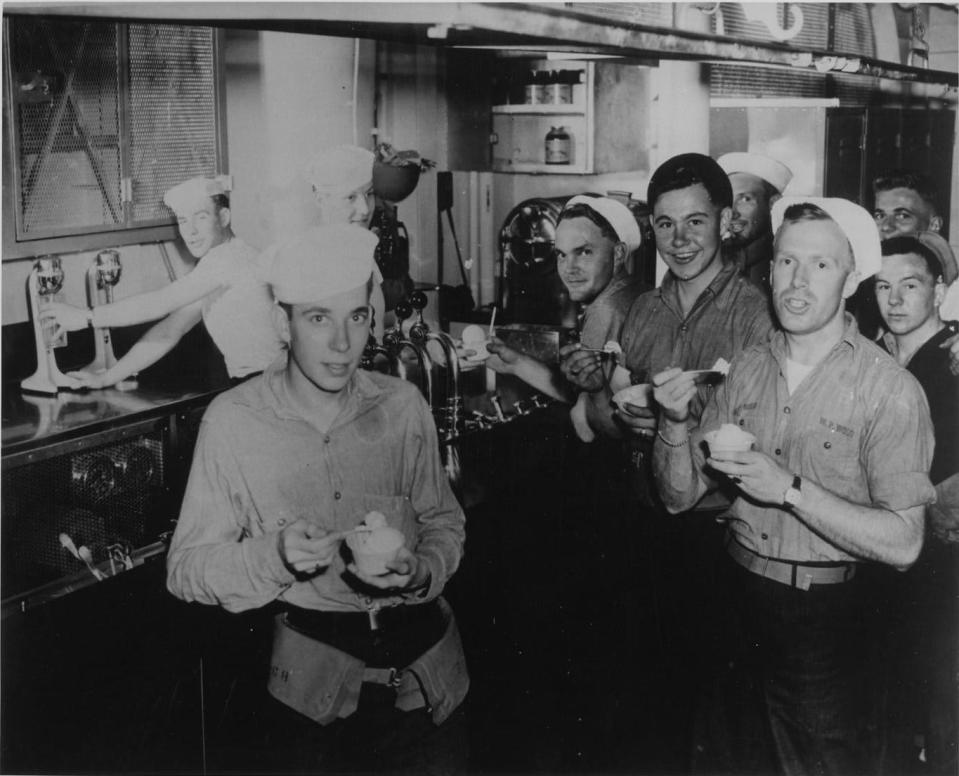
Even if their vessel didn't have a gedunk bar on board, sailors could still enjoy the sweet treat while serving in the European theater of WWII.
Crews aboard the destroyer tender USS Melville carried out several duties while servicing Navy vessels in both world wars. The Melville rearmed tank landing ships, transported and installed new equipment, replaced anchors and ship propellers, and repaired boat davits on amphibious landing craft known as Higgins boats.
When it wasn't assisting the US Navy's fleet, the Melville also gave respite to weary sailors with luxuries they didn't have access to at sea.
"After the first flush of the invasion, a steady stream of LSTs pulled alongside the Melville for check-ups and repairs," according to a 1945 edition of the US Navy's All Hands bulletin, "and it was then that the crews availed themselves of the luxury of the tender's soda fountain, barber shop, tailor shop, and laundry."
Crewmen assigned to tank landing ships dubbed the Melville the "Ice Cream Ship" of the European invasion, according to the bulletin.
'A touch of home'
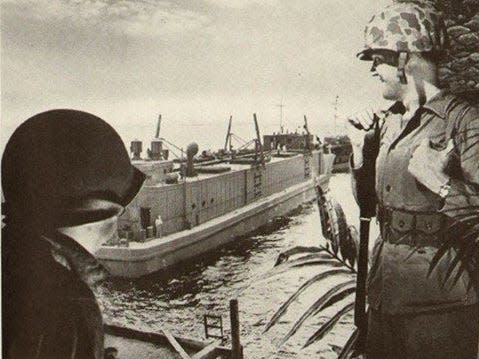
But delivering ice cream and other luxuries to sailors at sea was too big of a job for the Melville to handle alone.
In 1945, the Navy retrofitted the Army's refrigerated barges into the world's first maritime ice cream factories.
The US military operated three BRLs (Barge, Refrigerated, Large), launching USS Hydrogen, USS Calcium, and USS Antimony in 1944. Built out of concrete due to a steel shortage, the 265-foot-long vessels cost more than $1 million at the time, equivalent to about $17 million today.
The vessels were built to deliver perishable foods to soldiers stationed in the Pacific. They could carry the equivalent of 64 carloads of frozen meat and 500 tons of fresh vegetables, cheese, eggs, and other produce, the Redwood City Tribune reported.
The barges also featured a unit that could churn out 10 gallons of ice cream every seven minutes.
The National Dairy Products Corporation, now known as Kraft Foods, featured the ice cream barge, which uses the company's powdered ice cream mix, in a 1945 magazine ad.
"Can you imagine a greater tonic to body and spirit than real ice cream served in steaming jungles or on hard-won beachheads?" the ad read. "It's a touch of home as well as a valuable food."
Keeping the ice cream industry afloat
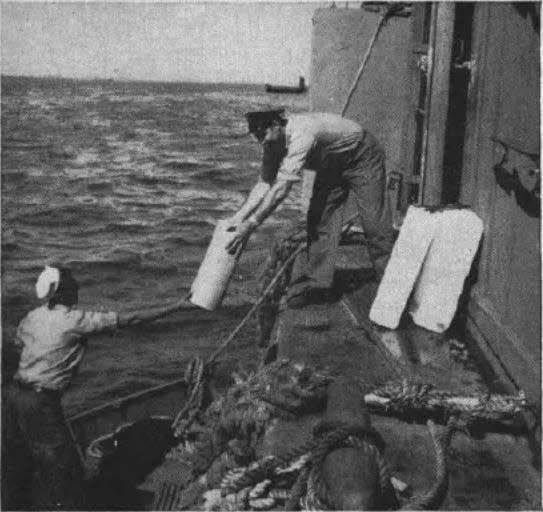
The Navy's commitment to bring ice cream to sailors serving in the Pacific also benefited the struggling ice cream industry amid wartime rationing and ingredient shortages.
The US government awarded contracts to ice cream businesses like Carvel and Howard Johnson's to provide it in commissaries at military installations and defense plants, according to "World War II and the Postwar Years in America: A Historical and Cultural Encyclopedia," by William H. Young and Nancy K. Young.
"The armed forces, wherever their location, had ice cream to soothe both the palate and nerves," they wrote.
The ice cream industry boomed as companies capitalized on its popularity in the postwar era, experimenting with new flavors and ways to serve the delicious frozen treat.
Read the original article on Business Insider

